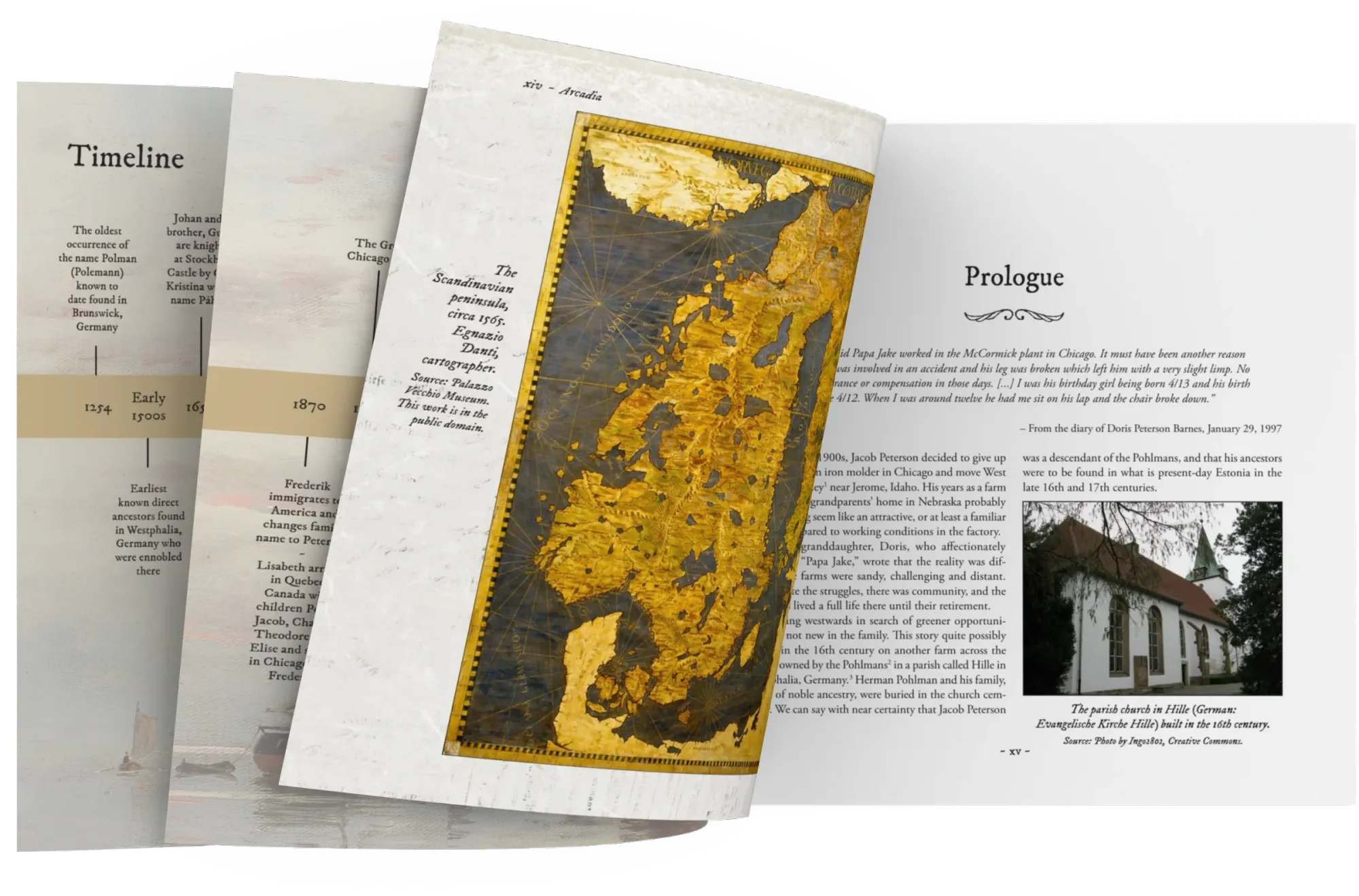
Where stories begin
Legend has it that twelve Polman brothers travelled to different countries and established lineages in each one. It is unknown which generation these twelve brothers represented, but perhaps this is why the family name can be traced to several different locations. This might also explain the variations in spellings of the name, based on local languages and significance, as well as the similarities between various coats of arms associated with the family names.
Most sources[[1]] agree that the Polman family originated in Westphalia in Germany, though origins in the Netherlands[[2]] and Poland have also been conjectured.[[3]] A family tree, presented at a heraldic conference in Mitau, Latvia in 1903, recorded the von Pohlmann family from 1380 to 1735. Its current whereabouts are unknown but it is the earliest reference to the family.[[4]]
Since the presence of the Polman family is so widespread and research is ongoing, at Polmanarkivet, we research and disseminate information about variations of the family name as part of our One-Name Study. These include Pohlman, Pohlmann, Polman, Polemann, Bolemann, Poldemann, and the ennobled name Påhlman. As there have been spelling variations of the surname among different families and even within the same family over time, it is believed that bearers of the name with these variations might, in fact, share a common origin or location.
The family history collection contains a total of 350 members of the lineage, which are spelled very differently, such as: Polemann, Pollmann, Poldemann, Polmann, Bolemann and Pohlmann, as well as drawings of many coats of arms and seals.[[5]]
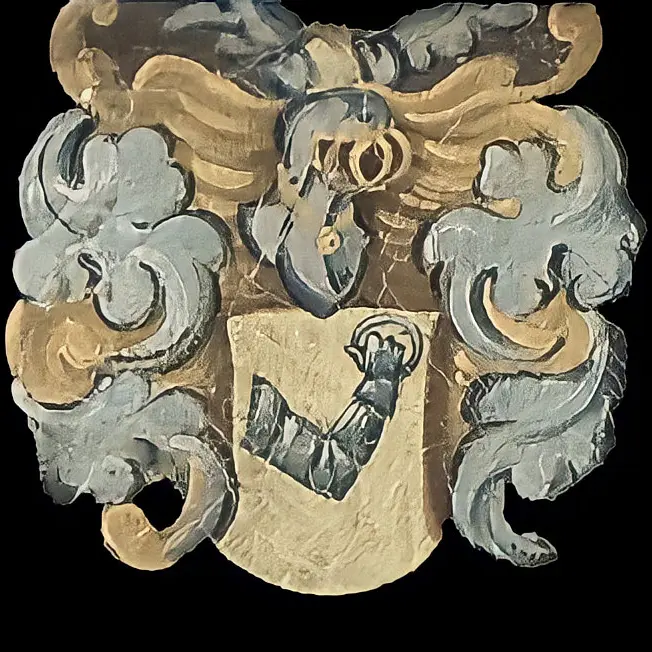
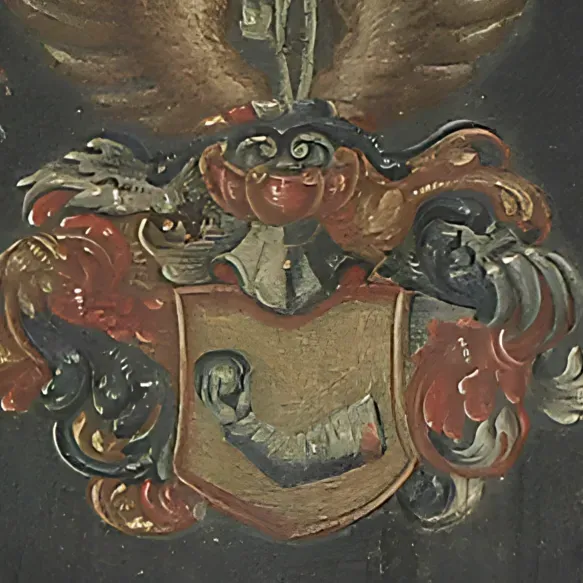
Fig. 1 Polman coat of arms with an arm holding a ring from 1623 portrait of Jöran Polman. Image by Jens Mohr via Skoklosters slott/SHM (PDM). Fig. 2 Påhlman coat of arms with an arm holding a cannonball from 1743 portrait of Carl Gustaf Påhlman. Image by Kulturparken Småland (CC BY 4.0).
Another clue is the study of heraldry, and the similarities between the coats of arms found associated with these family names in different regions. For example, a 1623 painting of Jöran Polman features a coat of arms with an armoured arm holding a ring, with a helmet and wings rising above it. The crest associated with the Swedish Påhlmans, knighted in 1650 (no. 501), is similar, though the arm is reversed and now holds a cannonball. Three acorns wind upward between two wings. The Estonian von Pohlmanns (knighted no. 112) seal bears even more similarities to the Påhlman coat of arms, including the overall colour palette. Other renditions of the Pohlmann seal in the 18th century included three eagles (Christian Friedrich Pohlmann, Germany, 1736[[6]]) and acorns.
But as we unravel legends and chase elusive family trees, here’s what we do know.
Timeline
Originally from a village in Westphalia, members of the Polman family were also found in Sweden, Poland, Latvia, Estonia, Denmark, and Norway throughout the centuries.
A ‘hof’ in Hille, Germany
We can say with near certainty that the family originated from an ancient noble family in a parish called Hille in Westphalia, Germany.[[7]] In the early 17th century, Hermann Pohlmann – the owner of a farm called Pohlmannsche Hof (now Meyerhof) – was buried in the local church along with his wife, a little son,[[8]] and other members of the family.
It is said that the family came from the parish of Hille, in the county of Ravensberg, where there was a noble family Polman, whose coat of arms bore an arm holding a ring.
Descendants of the Pohlmanns, Susanne Pohlmann and her husband Colonel Johann Ernst Heinrich von Oeynhausen, also owned Oeynhausen Hof (formerly Vossenhof; now Reimlers Hof) in 1699. Their coats of arms, featuring an arm holding a ring and a ladder respectively, are displayed in the gate building. This farm was later inherited by Christian Friedrich Pohlmann[[9]] in 1728, who also presumably inherited Pohlmannsche Hof, thus uniting both the farms.[[10]]
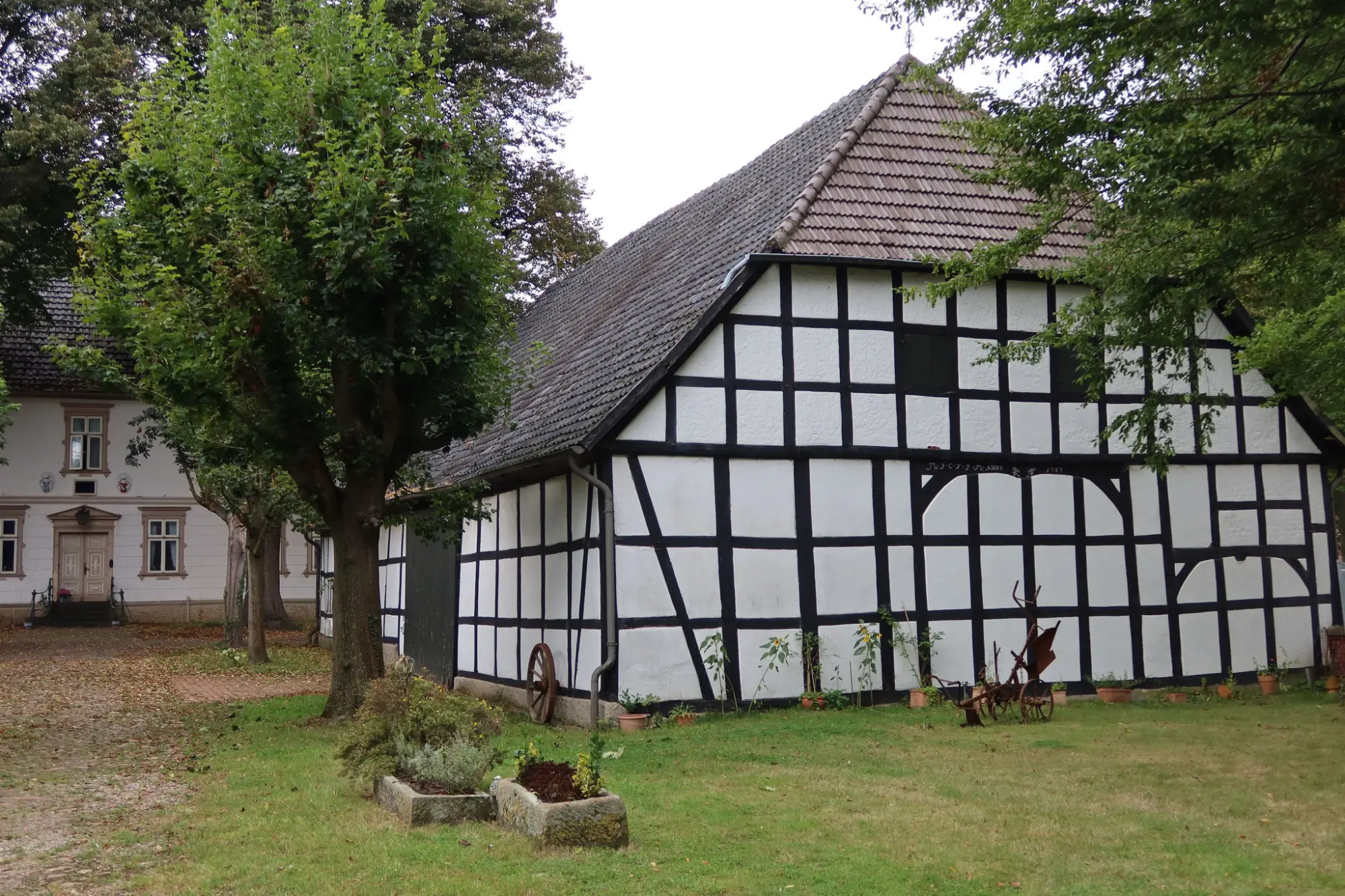
Another connection to Hille dates back to 1680. A merchant named Martin von Lengerken, from Gothenburg in Sweden, married Sara Maria Pohlman of Hamburg in 1656. He later settled on an estate named Sachenshof in Hille, where the family pew dates to 1680. The altar of the Protestant church was donated by Susanne Pohlmann and her husband, pointing to a possible connection between them and Martin’s wife Sara, which tied them to Hille.
Polmanarkivet’s first physical acquisition made in November 2023 is a collection of manuscripts from Hille related to the Pohlmann family, dating to the 17th and 18th century. These include, among others, seven mortgage notes from 1697 signed by Susanne Pohlmann and Johann Oeynhausen which allegedly allowed them to purchase Oeynhausen Hof; four receipts and a letter addressed to Christian Friedrich Pohlmann dated 1742-1779; and documents addressed to von Oeynhausen. Further research into these documents and the family’s origins is underway.
Branching out
The earliest confirmed patriarch of the Polman line was Jürgen Polman, born in the mid- to late 16th century and considered the progenitor of the Swedish family Påhlman. He was the son of Hans Polman and Margarete, confirmed both through genealogical research and an archival testimony from 1603. Hans Polman[[11]] was a county clerk in Padise, which is a historically significant parish located in the vicinity of Tallinn in Estonia. Jürgen’s first wife was Anna Wesell, and he later married Gertrud von Bremen. His son Jöran (also known as Jürgen The Younger) was born in 1597. Jürgen had three other sons – Claus, Henrik Johan and Fredrik – as well as a daughter named Katarina (Catharina).
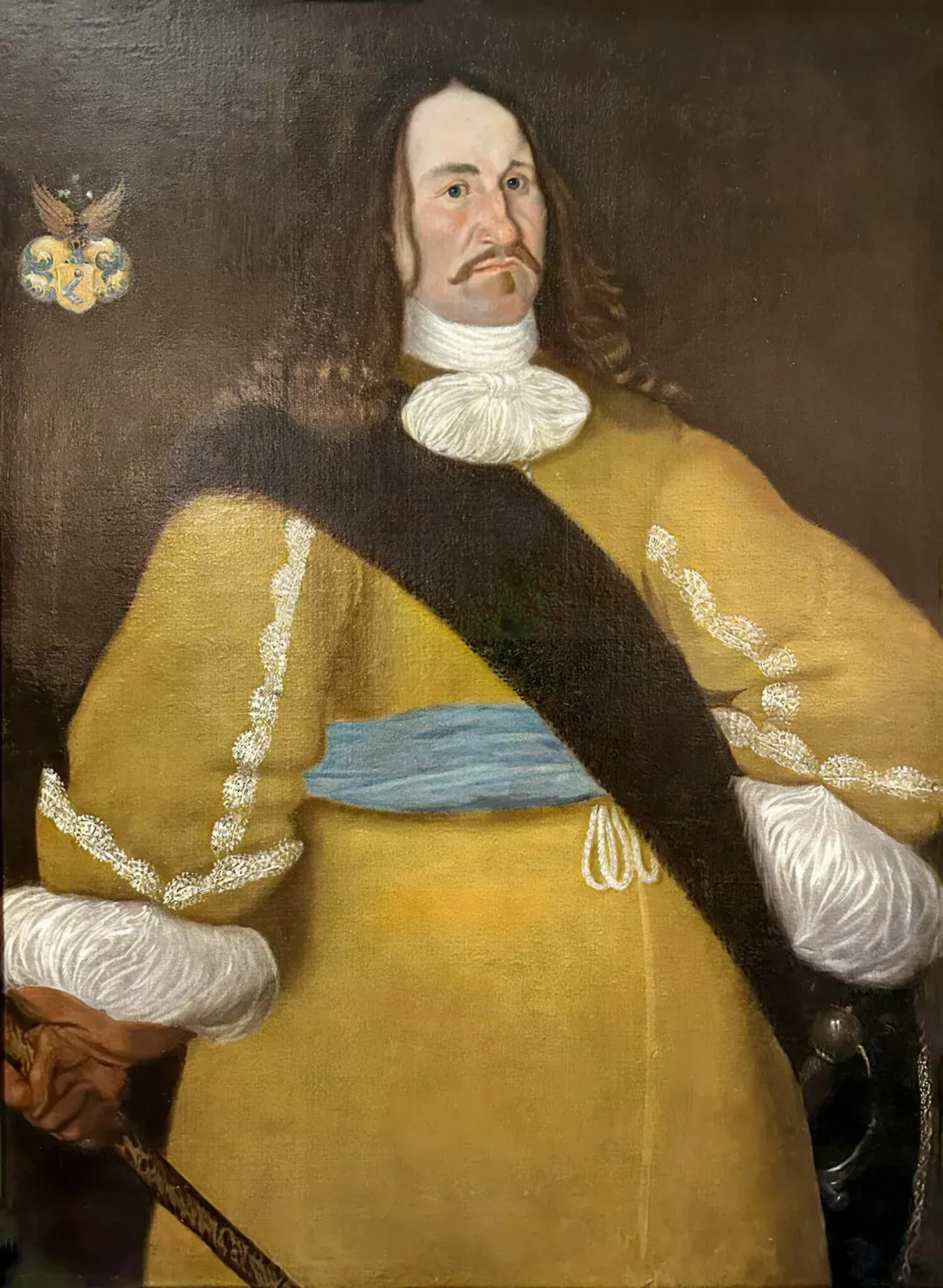
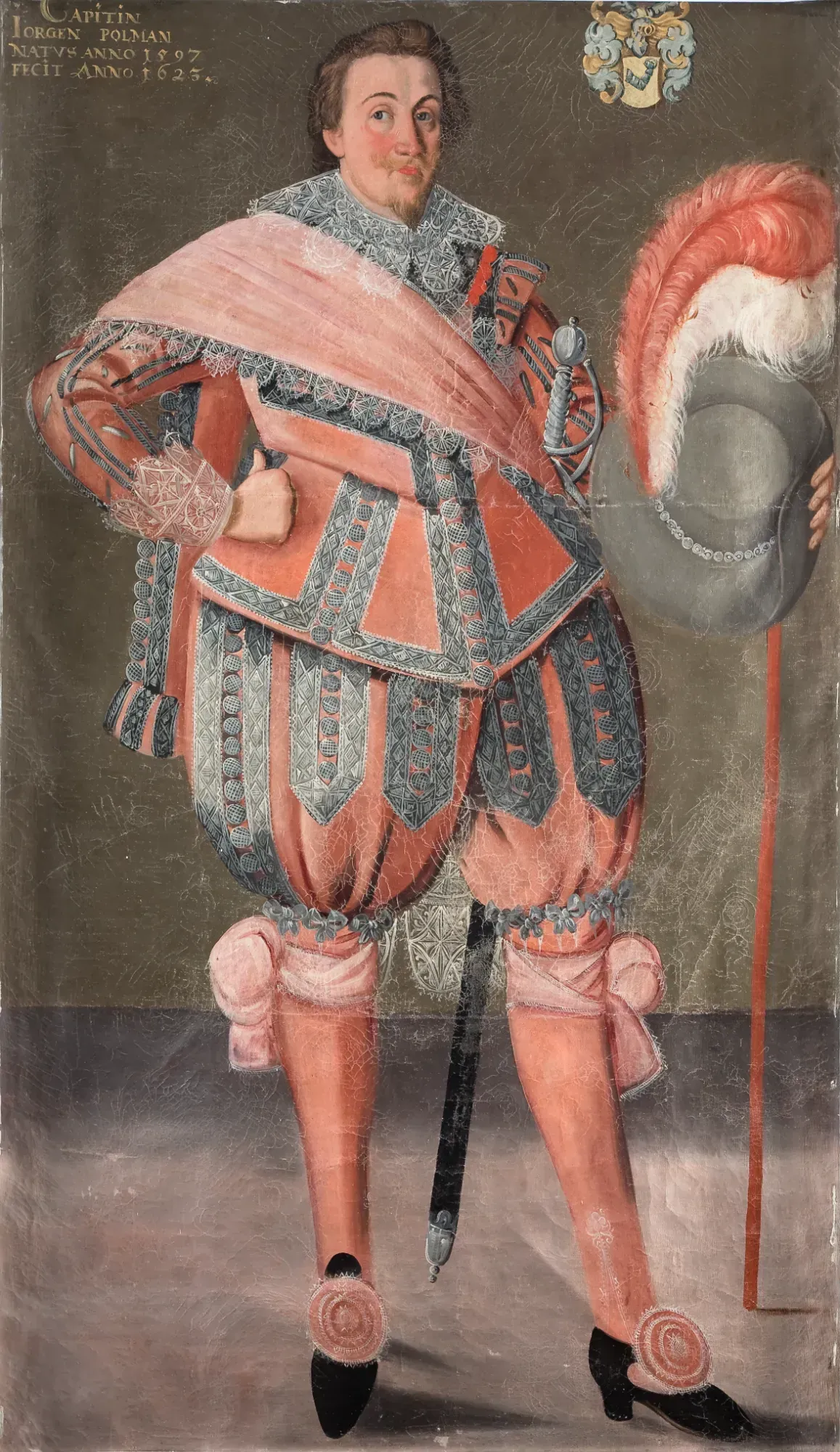
Fig. 4 - Göran Pålman the Elder (ca. 1576-1641), undated, oil on canvas. Image by Militärhögskolan Karlberg/Polmanarkivet (CC BY 4.0). Fig. 5 - Georg Günther Kräill (1584-1641), Jörgen Pålman, f. 1597, kapten, 1623, tempera on canvas. Image by Skoklosters slott/SHM (CC BY 4.0).
Pärnu, Tartu and Narva fell at various stages to the Russians during the [Livonian] war, but as the Swedes had seized Tallinn in 1561, they were able to hold on to it, and by the end of the war they controlled not only Estonia but the whole Baltic Sea.[[12]]
While Jöran followed in his father’s footsteps that led him to Sweden, Claus is believed to be the progenitor of the von Pohlmann family line[[13]], registered at the Knights’ House in Reval (Tallinn) under No. 112.[[14]] The family began to appear in Livonia in the 16th century in many different locations, owning land in Pollmannland and Strippen, Planup or Plānupe (Hector Polemann and Anna Schopman), and Pigant manor near Dorpat was owned by Jürgen for a while.[[15]] Following the Great Northern War (1700-1721),[[16]] Livonia and Estonia became Russian governorates, and members of the von Pohlmann family went into the service of imperial Russia. Claus’ great-grandson Reinhold Wilhelm held important civil and military roles, becoming a close acquaintance of Russian empress Catherine the Great. This branch of the family became extinct in Estonia in 1898.
Other locations that the family dispersed to include Poland, the Duchy of Courland (part of modern-day Latvia), Denmark, and Norway. The Polish branch was said to be counted among the noble families of Livonia.[[17]] There are mentions of a “Captain Pohlmann” in 1624, but their identity and origin is unclear. The family also appeared in the Duchy of Courland in the 16th century or before, in Candau – the German name for Kandava, a town in modern-day Latvia.[[18]] A coat of arms from 1624 featuring three acorns within a shield was associated with the name “Jürgen Pollmann”.[[19]] Additionally, Hermann Polemann or Pohlmann (circa 1650-1723), a notary public, was believed to have lived in Norway and to have started the Norwegian branch of the family.[[20]] Later, more descendants of the Polmans would find their way to Norway. In the late 19th century, members of the family were found in Denmark, where they were counted amongst the list of non-naturalised nobility in Denmark.
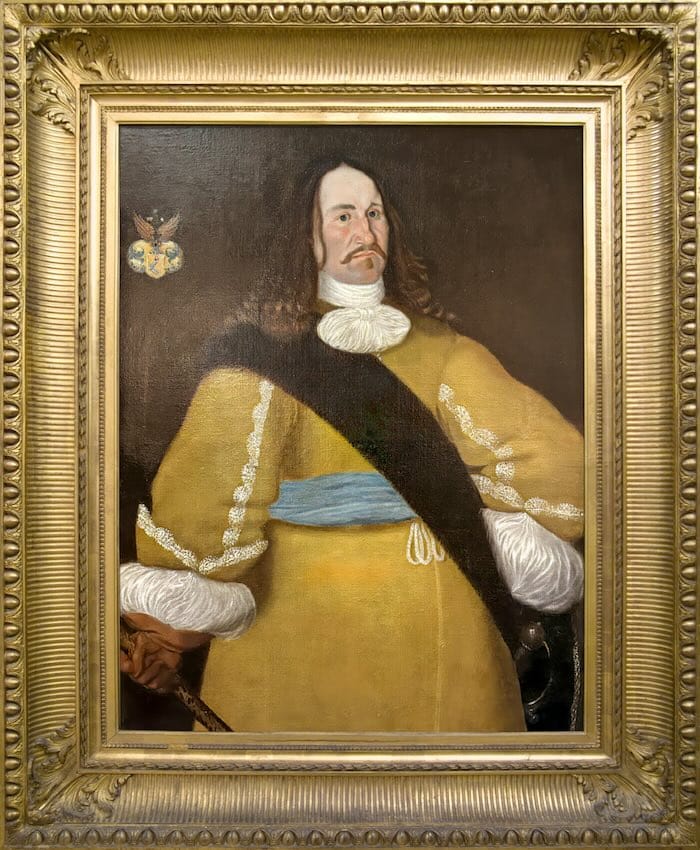
Meet the Patriarch
With his diligence, perseverance and career choice, Jürgen Polman charted the course that many generations of his family line would follow.
Read Jürgen’s bioSwedish connections
The family’s strong ties to Sweden began through profession rather than lineage. In Livonia, Jürgen Polman forged alignments with Swedish monarchs who vied for control of the region, providing finances and services in exchange for parcels of land and unwavering loyalty. On 20 November 1600, Jürgen entered the service of Duke Karl of Södermanland – who would later become sovereign of Sweden, Karl IX – and received from him, in exchange for a sum of money that Jürgen had loaned, the manor Piigandi (Pigant).[[21]]
From a twenty-first century perspective, it is easy to forget that Sweden was once a large empire controlling much of northern Europe.[[22]]
Jürgen’s eldest son Jöran took the alliance further, serving in the Swedish military. He started out as a noble bursch in the bodyguard in 1619, and worked his way up to become captain of the Kronoberg regiment in 1623.[[23]] He was also chamberlain to King Gustavus Adolphus, and served in the Thirty Years’ War[[24]] as captain of the Smålanders under Herman Wrangel.[[25]] In 1621, Jöran was among the officers under Wrangel who captured the fortress of Riga, ensuring Swedish control over the coasts of the Baltic.[[26]] He is one of twenty soldiers whose portrait adorns the walls of Sweden’s Skokloster Castle.
Around 1623, Jöran married Christina Lilliesparre of Sweden, with whom he fathered three children named Johan, Gustaf and Anna Christina. Notably, through his marriage, he became the owner of the Swedish manor Ugglansryd, located in Ryssby in Kronoberg, Småland, which was owned by the Lilliesparre family. This cemented the Polman presence in Sweden, and Ugglansryd remained in the family for nearly two centuries, until 1798.
The Polmans were finally home. Ugglansryd remained in the family for at least 175 years, a place where generations lived and thrived, the backdrop of and almost a character in their family history.[[27]]
On 16 September 1650, four years before she abdicated the throne, Sweden’s Queen Kristina knighted Jöran’s sons, the brothers Johan and Gustaf – both military men – at Stockholm Castle. Later, she also permitted their sister Anna Christina to be included in their nobility. The family name thus transitioned to the more Swedish “Påhlman”[[28]], introduced on 3 October 1650 in the third (journeyman) class under the current No. 501. Later, in 1778, the family would be promoted to the second (knight) class which had been re-established. The original shield letter has been deposited in Riddarhuset, the House of Nobility in Stockholm, since 1918.
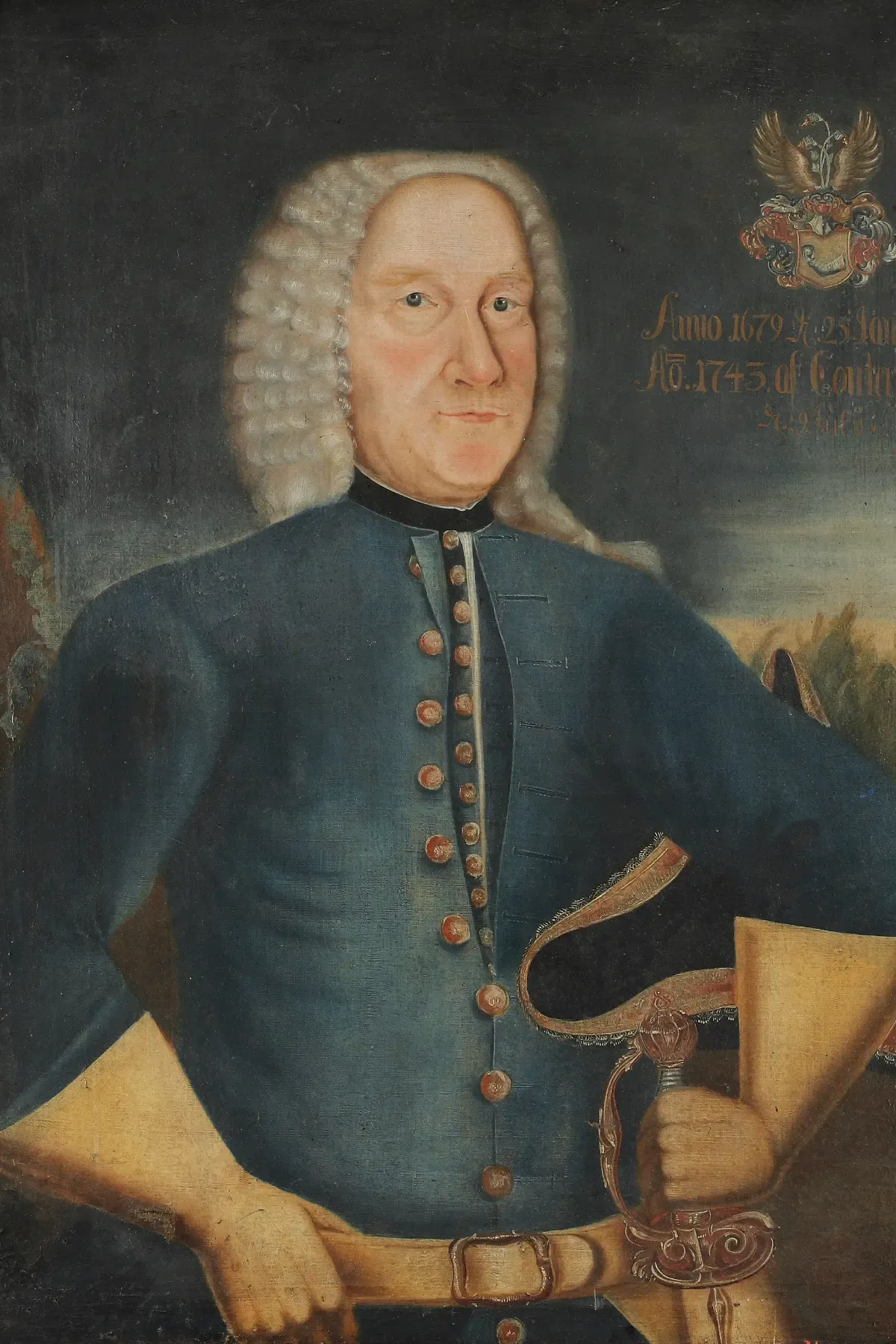
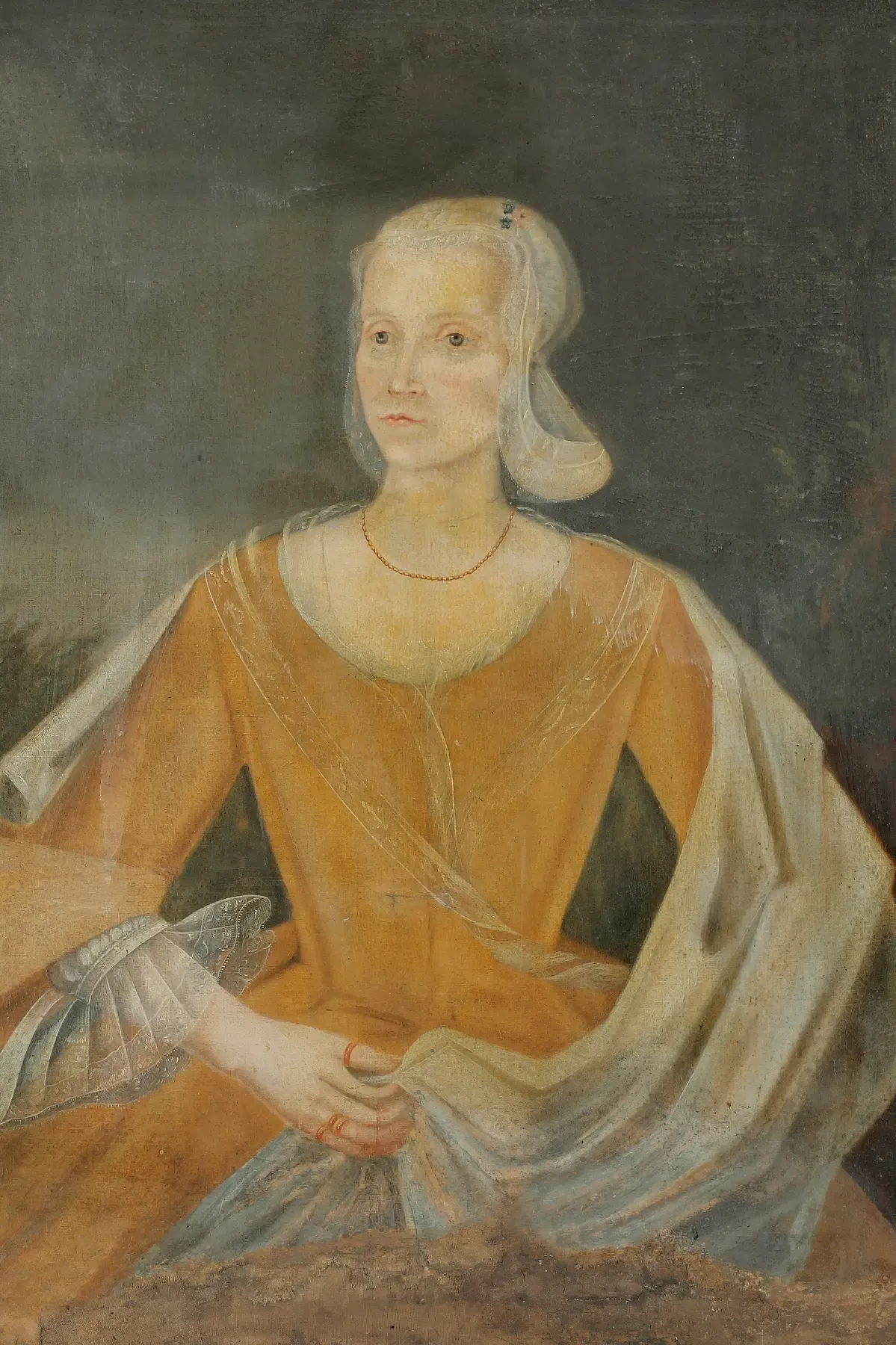
Fig. 6 Carl Gustaf Påhlman (1679-1757), 1743, oil on canvas. Image by Kulturparken Småland (CC BY 4.0). Fig. 7 Christina Elisabet Renner (1712-1769), 1743, oil on canvas. Image by Kulturparken Småland (CC BY 4.0).
Johan married Margareta Silfversparre, and the couple had several children. Their eighth child, Carl Gustaf, was also a soldier who received the title of Lieutenant Colonel, and spent 14 years as a prisoner of war in Siberia. Returning to Stockholm in 1723, his life was no longer on hold – he resigned from the military and married Christina Elisabet Renner in 1730, welcoming ten children at Ugglansryd.
Carl Gustaf’s three youngest sons were named Anders Otto (1740-1815), Johan Magnus (1741-1797) and Adolf Fredrik (1743-1825). Adolf Fredrik grew up to become a multifaceted leader and decorated colonel. Johan Magnus also had a long and illustrious career in the Swedish military, and was awarded the Royal Order of the Sword in 1779. The three sons are considered the progenitors of the family’s three branches that still exist today.
Anders Otto served in Småland’s cavalry regiment. In 1772, when he was ryttmästare or cavalry master, he inherited the manor Ugglansryd from his father. He had eight children with his wife, Christina Margareta Unge, and was widowed in 1784. Several pieces of evidence point to a lesser-known story concerning this nobleman and Stina Jönsdotter, who worked at Ugglansryd as a maid and lived at Metaretorpet, a cottage on the premises. Between 1791 and 1802, she had six children with Anders Otto, and he contributed financially towards their children’s upbringing until they came of age.[[29]]
In 1798, Anders Otto sold Ugglansryd, ending a chapter in the family’s history.
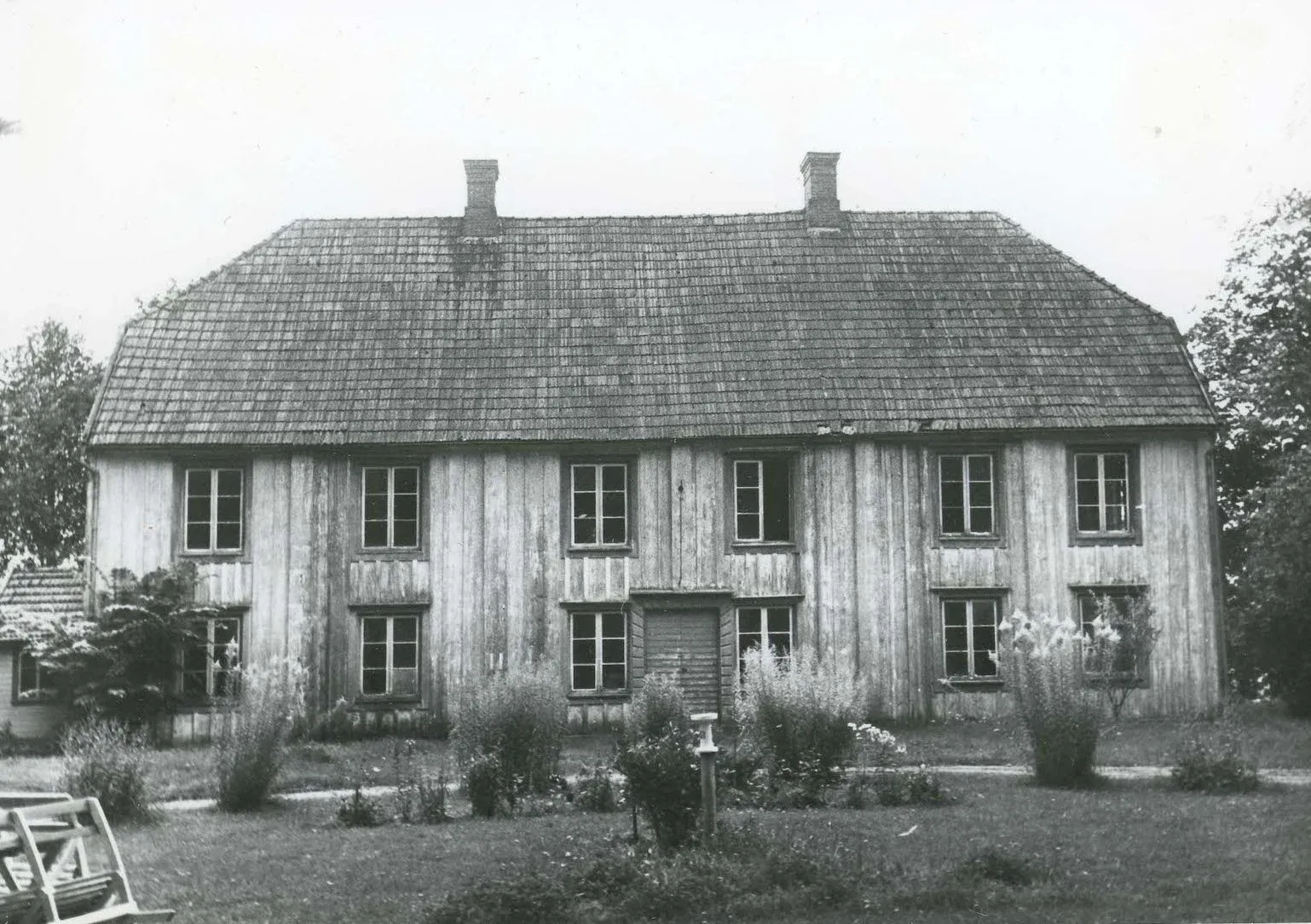
Onward and westward
Anders Otto moved to Agunnaryd, and Stina married a farmhand and also moved away. Of their children, the three daughters worked “in the service of others,” the eldest son was a shoemaker, and the second son, Peter, learnt and went on to excel in the craft of hat making – quite unlike their noble kin with their military careers.
Peter (b. 1800) would also craft a new family name for his family. While he was named Andersson following the patronymic system, family names had started to become more widespread in Sweden in the 17th and 18th centuries, and many people began to select names quite unrelated to their family or profession. Between 1819 and 1827, Peter’s last name changed from Andersson to Cederström, combining the Swedish words for cedar (“ceder”) and stream (“ström”). It is not a very common last name today, with less than 500 people in the world using it, of which about 70% live in Sweden.[[30]]
In 1828, Peter left Sweden in favour of Norway in search of better opportunities. By the end of the 18th century, hatmaking was one of at least 60 crafts practised in Norway, and hatters were doing well enough to be able to export their creations. Peter landed in the southwestern port city of Stavanger at a time when emigration from Sweden was restricted by law and fairly complicated.[[31]] Two years later, he married Tobia Thorsdatter Hommeland, the daughter of a yacht skipper, at the Stavanger Domkirke. The Hommeland farm is well-known, with many generations still associated with it. The couple went on to have nine surviving children. Peter made a few moves locally as the years went by, and unfortunately died a poor man on 28 April 1874 at the pier Solandsbryggen in Pottemakerstranden.[[32]]
His son, Frederik Wilhelm Cederstrøm, had found his niche as a jernstøber or iron moulder in Stavanger. Frederik married Lisabeth Jacobsdatter in 1860; by 1865, according to the census, he “ran away to America.” The truth was not as dramatic, however. Those were tough years in Scandinavia, with successive potato famines and collapsing fishing and shipping industries, leading to waves of migrations to America. The first of these took place between 1866 and 1873, with over 100,000 people leaving Norway. Frederik was one of them, but he returned for his family, and they together made a final move in 1870, landing in Chicago. It was a very different world, and not necessarily easier. The work week was long, and the wages meagre; Frederik and his three sons worked as iron moulders, but a decade later, looked to move further west in search of fertile lands and a healthier life.
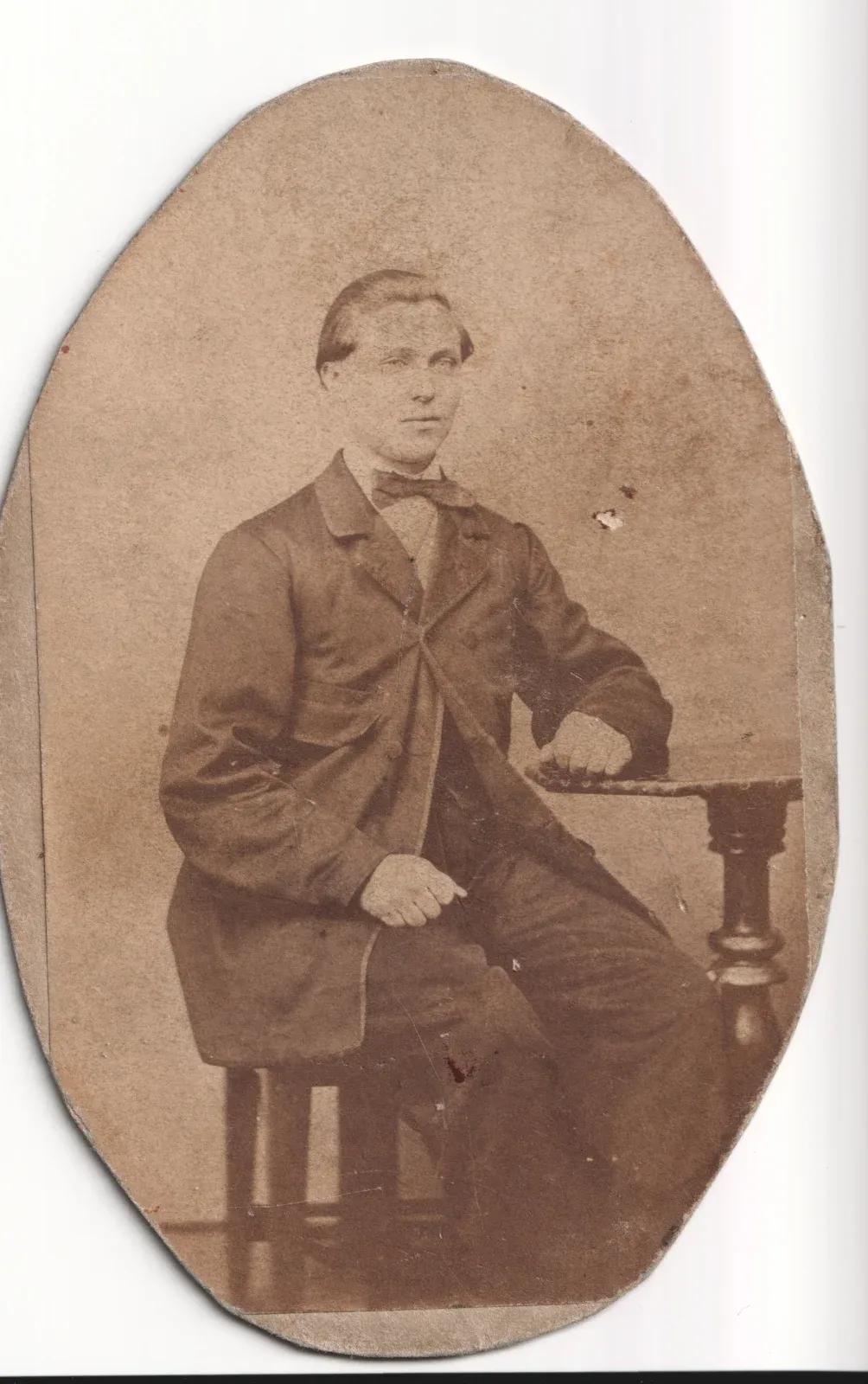
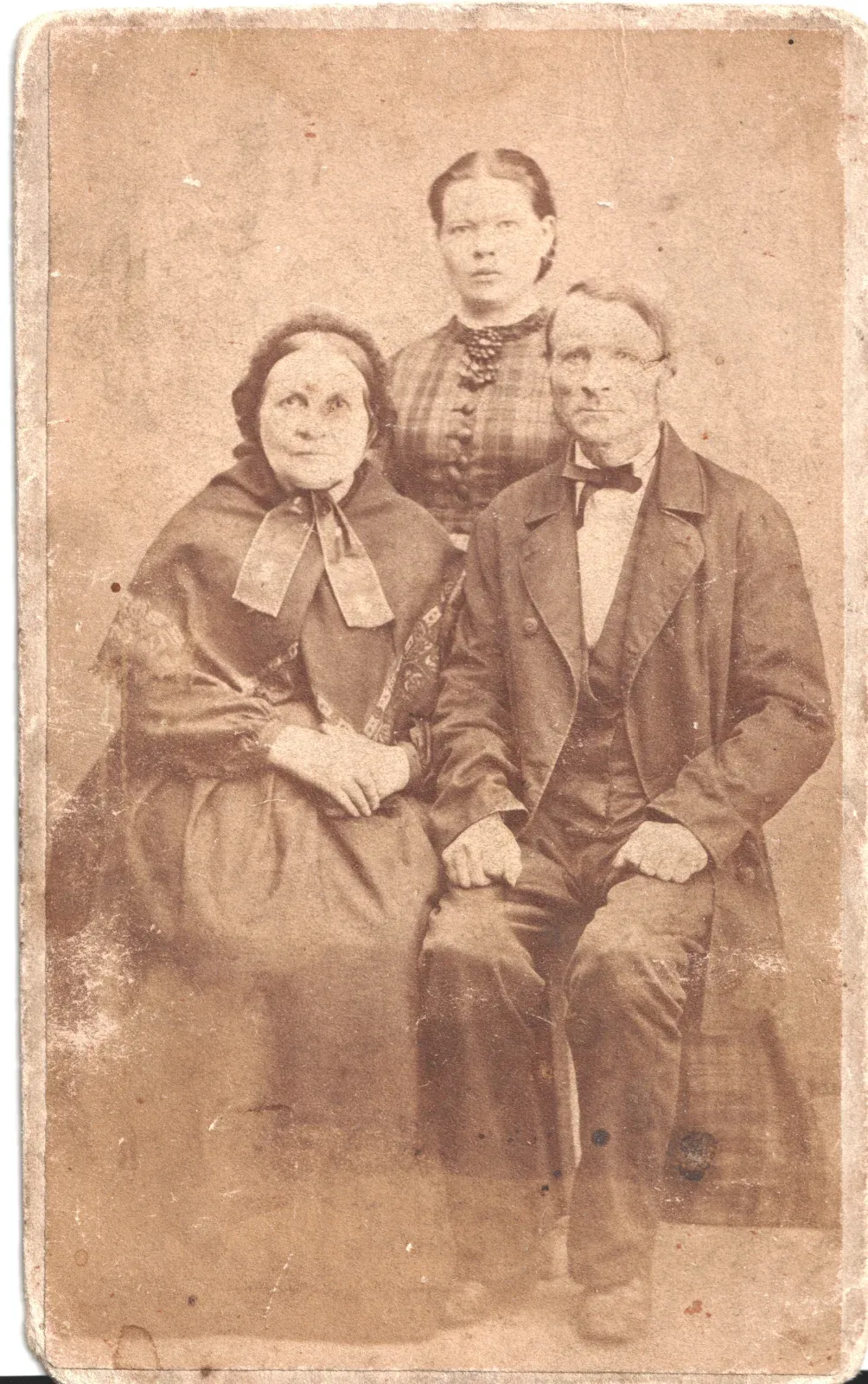
Fig 9. Frederik Wilhelm Cederstrøm (Peterson) ca. 1860s in Stavanger. Fig. 10 Lisabeth Jacobsdatter Brath with her parents ca. 1860s in Stavanger.
In the 1880s, the family made three significant changes – they updated their family name to the more anglicised yet patronymic “Peterson”; bought a farm of their own in Nebraska; and became US citizens. In the 1900s, Frederik’s sons Jacob and Bill moved to Twin Falls in Idaho. Though it was long and hard work, and not immediately successful, tending the land became a family profession for the Petersons, leading to several generations of tenacious farmers.
By all accounts, this is the story of a fearless family line. […] In 16th century Estonia and in 21st century America, across Sweden, Norway, Chicago, Nebraska and Idaho, they created opportunities and made every effort to grow, building on the achievements of their predecessors and making better lives for those to come.[[33]]
[[1]]: Gustaf Elgenstierna, The Genealogies of the Introduced Swedish Nobility, Vol. 29 (1995-1997): 53, https://sok.riksarkivet.se/sbl/Presentation.aspx?id=7430, accessed: 21 March 2022; Palmskiöld, Adelsvapen Wiki https://www.adelsvapen.com/genealogi/ Påhlman_nr_501, accessed: 17 March 2022 and https://www.riddarhuset.se/blog/att/ pahlman/, accessed: 17 Mar 2022
[[2]]: It is possible that the family in Hille descends from a noble family from Netherlands in Drenthe called Polleman but this is not yet confirmed
[[3]]: Anrep Gabriel. 1864. Svenska Adelns Ättar-Taflor 3 [Von Nackreij – Skytte Info]. Stockholm: Norstedt; Kuropatnicki, Ewaryst Andrzej. Wiadomość o klejnocie szlacheckim oraz herbach domów szlacheckich w Koronie Polskiej i Wielkim Księstwie Litewskim. Warszawa, 1789 r.; Polska Encyklopedia Szlachecka. Wykazy polskich rodzin szlacheckich. (oprac. Starykoń-Kasprzycki, Stefan Janusz; Dmowski, Michał). Warszawa, 1935-38 r.; Źernicki-Szeliga Emilian von. 1904. Die Polnischen Stammwappen : Ihre Geschichte Und Ihre Sagen. Hamburg: Verlag von Henri Grand.
[[4]]: Kurländischen Gesellschaft für Literatur und Kunst, Katalog der Heraldischen Ausstellung zu Mitau 1903 (Indiana University: J.F. Steffenhagen and Sohn, 1903)
[[5]]: Jahrbuch für Genealogie, Heraldik und Sphragistik, 1897
[[6]]: He presumably changed his arms. (see: Horst Karl Adolf von der. 1894. Die Rittersitze Der Grafschaft Ravensberg Und Des Fürstentums Minden [The knight seats of the county of Ravensberg and the principality of Minden]. Berlin: Stargardt, 74.)
[[7]]: The county of Ravensberg, historically part of the medieval Bishopric of Minden.
[[8]]: The son Johann was commemorated by a plaque. The inscripIon reads: “Anno 1619 June 13th is Hermann Pohlmanns son Johann born, died 1622. I live for you, Christ, I’ll die for you.” (see: Horst Karl Adolf von der. 1894. Die Rittersitze Der Grafschaft Ravensberg Und Des Fürstentums Minden [The knight seats of the county of Ravensberg and the principality of Minden]. Berlin: Stargardt, 74.)
[[9]]: He died 26 May 1781, aged 70.
[[10]]: Reimlers Hof was subdivided by 1882 but is still well-preserved and surrounded by a moat. Meyerhof also still exists.
[[11]]: Otto Magnus von Stackelberg, Genealogisches Handbuch der baltischen Ritterschaft 1 [Genealogical Handbook of the Baltic Knighthood 1] (Görlitz: Verlag für Sippenforschung und Wappenkunde Starke, 1931)
[[12]]: Neil Taylor, Estonia: A Modern History (London: Hurst and Company, 2018)
[[13]]: “Geschlechtsbuch der Familie von Pohlmann”, Rahvusarhiiv (National Archives of Estonia), Immatrikuleeritud Aadli Sugukonnaregistrid Matriklikomisjon, https://www.ra.ee/dgs/_purl.php?shc=EAA.854.3.284:1, accessed: 4 March 2023
[[14]]: “Påhlman nr 501”, Adelsvapen-Wiki, https://www.adelsvapen.com/genealogi/Påhlman_nr_501, accessed: 17 March 2022
[[15]]: Jahrbuch, 1897
[[16]]: The war challenged the supremacy of Sweden, leading to the rise of the Russian Empire and the decline of the Swedish Empire.
[[17]]: Johan Gabriel, Svenska Adelns Ättar-taflor Utgifna: Graufelt Från Dal-mörner Af Tuna (Arkrose Press, 2015); Kuropatnicki, Ewaryst Andrzej. Wiadomość o klejnocie szlacheckim oraz herbach domów szlacheckich w Koronie Polskiej i Wielkim Księstwie Litewskim. Warszawa, 1789 r.; Polska Encyklopedia Szlachecka. Wykazy polskich rodzin szlacheckich. (oprac. Starykoń-Kasprzycki, Stefan Janusz; Dmowski, Michał). Warszawa, 1935-38 r.; Źernicki-Szeliga Emilian von. 1904. Die Polnischen Stammwappen : Ihre Geschichte Und Ihre Sagen. Hamburg: Verlag von Henri Grand.
[[18]]: Polmann’s lodgement at and in Candau, probably before 1560 to 1620 (Jahrbuch, 1897)
[[19]]: Max Müller, Beitrag zur Baltischen Wappenkunde (E. Plates, 1931)
[[20]]: Piro, Bjørn. “Notarius Publicus Herman Pohlmann, Begr. 20.Jul.1723.” Arkivverket. Arkivverket (The National Archives), October 14, 2014. https://forum.arkivverket.no/topic/192706-notarius-publicus-herman-pohlmann-begr-20jul1723/.
[[21]]: Hagemeister Heinrich von. 1837. Materialien Zu Einer Geschichte Der Landgüter Livlands 2 [Der Dörptsche Kreis]. Riga: Frantz.
[[22]]: Taylor, Estonia
[[23]]: “Påhlman, släkt”, Riksarkivet, https://sok.riksarkivet.se/sbl/Presentation.aspx?id=7430, accessed: 21 March 2022
[[24]]: A highly destructive religious war in Europe between 1618-1648 that led to millions of deaths. It started within Germany’s Holy Roman Empire, but involved more countries in the 1630s, with Sweden supporting France.
[[25]]: Karl Löfström, “Bröllop och Förlofning.” Saisonen: magasin för Konst, nyheter och moder [Saisonen: magazine for art, news and fashion], Volume 4, 1919, 434-36
[[26]]: “The Patriarch Herman Wrangel”, Skoklosters Slott, https://skoklostersslott.se/en/the-history-of-skokloster-castle/the-people-at-skokloster/herman-wrangel/, accessed: 14 October 2023
[[27]]: Jake Peterson, Arcadia: Peterson Family History and the Secrets of a Swedish Nobleman (USA: Pictures & Stories Inc., 2022)
[[28]]: A very uncommon name today, with only 239 persons with that name in Sweden. The Påhlman equivalent in the 2010 US Census recorded only 151 persons in the United States.
[[29]]: A statement signed by the concerned parties in 1819 to be released from further claims provides details of the amounts that were gifted in 1804. Sunnerbo District Court Archives, Estate records and inheritances, Riksarkivet, SE/VALA/01582/F II/26 (1818-1819), image ID: C0112570_01026, https://sok.riksarkivet.se/bildvisning/C0112570_01026
[[30]]: Patrick Hanks, Dictionary of American Family Names: 3-Volume Set. United Kingdom: Oxford University Press, USA, 2003
[[31]]: David E. O’Connor and Arthur E. Soderlind, The Swedes: In their Homeland, In America, in Connecticut https://files.eric.ed.gov/fulltext/ED240034.pdf; Lars Ljungmark, Swedish Exodus, 1979 https://bit.ly/3EjXddD
[[32]]: SAST, Stavanger byfogd, 5/52/52B/L0002: List of reported deaths, 1863-1877, p. 109, https://media.digitalarkivet.no/en/view/62800/112
[[33]]: Peterson, Arcadia, p. 220
